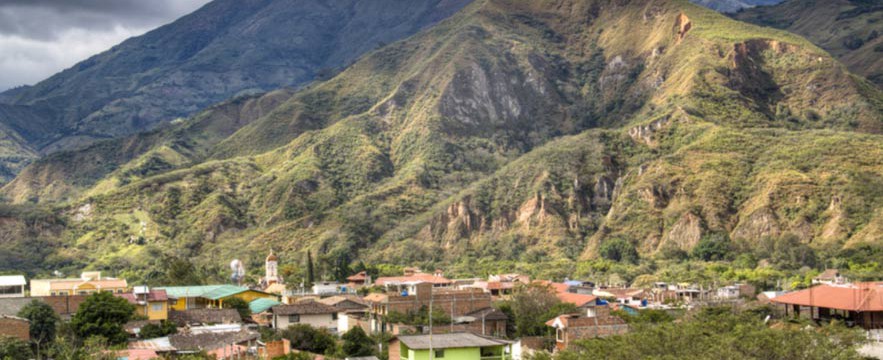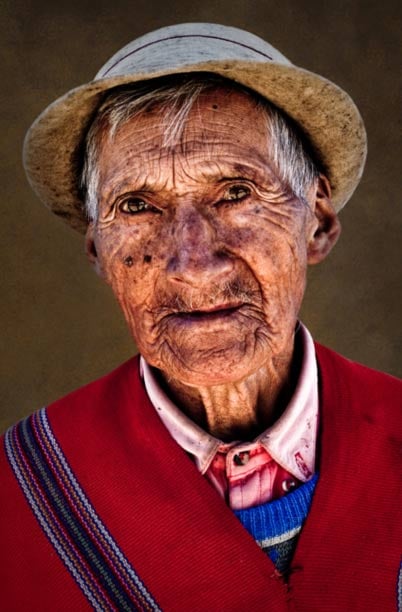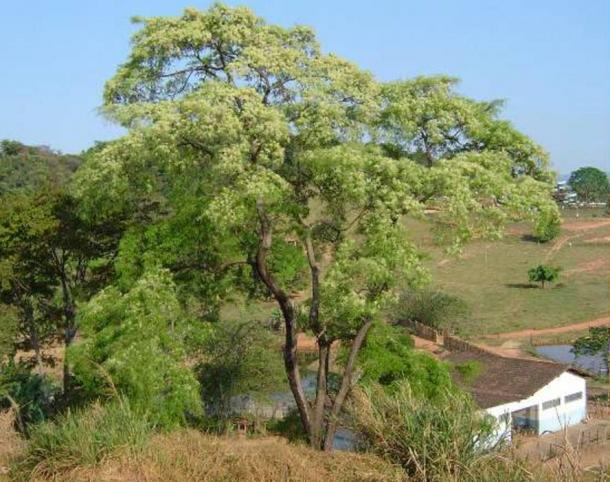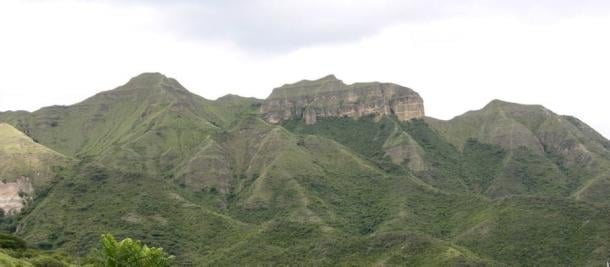Author: APRILHOLLOWAY
Tucked away in the Andean slopes of Ecuador, lies the quiet and picturesque village of Vilcabamba. Known to many as the ‘Valley of Longevity’, Vilcabamba has a reputation for being home to one of the highest concentrations of exceptionally old people, including numerous centenarians and a number of residents apparently reaching 140 years.
The name ‘Vilcabamba’ derives from the indigenous Quichua “huilco pamba”, meaning Sacred Valley. Originally a retreat for Inca rulers, it also became known as the ‘Playground of the Inca’. Inca royals travelled to the valley to renew and refresh their health, and it’s no wonder they chose Vilcabamba as their destination – the area is blessed with pristine water, pure air, rich soil, and a permanent Spring-like climate, where fruits, vegetables, and medicinal plants thrive all year round.
The Quichuan word ‘huilco’ also refers to a sacred tree found in the valley. The Anadenanthera colubrine tree (known also as Willka, Vilca or Huilca), is considered to be a treasure in Ecuador and is deemed to be holy among the Quichuan. Its leaves are used to treat respiratory ailments and asthma and the tree is also valued for its ability to bring back pristine oxygen and block pollutants in the air, which many believe is a contributing factor to the residents’ good health and longevity.
Vilcabamba is overlooked by a mountain called El Mandango, ‘the Sleeping Inca’. Local legend says that the spirit of the mountain protects the area from earthquakes, volcanoes, and other natural disasters.

The Sacred Valley was peacefully inhabited for centuries with very little contact from the wider world. However, in 1973, Dr Alexander Leaf of Harvard Medical School drew international attention to Vilcabamba following a cover story for National Geographic Magazine about the residents’ longevity. Two books further enhanced the town’s reputation. In 1975, Dr. David Davies, an English gerontologist, published ‘The Centenarians of the Andes’ about his research in Vilcabamba, and in 1976, popular author Grace Halsell published ‘Los Viejos: Secrets of Long Life from the Sacred Valley’.
Since then, news (and rumors) of the longevity and incredible health of ‘Los Viejos’ (The Old Ones) spread far and wide. Mixed in with scientific reports of good health and old age, were stories about the people of Vilcabamba being immune to death. It was said that the Grim Reaper passed by the valley but never entered it. Travel magazines began referring to Vilcabamba as ‘Shangri La’, a place where magic happens, ‘The Land of Eternal Youth’, ‘The Lost Gardens of Eden’ and the ‘Isle of Immunity’. Scientists and reporters began flocking to the quaint little village, featuring elderly locals on Ripley’s Believe It or Not and releasing reports in National Geographic, Reader’s Digest, and other major media outlets.
Old Age in Vilcabamba
When Dr. Alexander Leaf visited Vilcabamba in 1973, along with Dr. Harold Elrick of the University of California at San Diego, and a group from the University of Quito, they found that many of the residents reported their age at over 100 years old, and a few stated their age as being over 140 years. This was apparently confirmed by birth and baptismal records.
A census in Loja (the region in which Vilcabamba is located) the following year appeared to back up this information. Out of a total population of 819 people at the time, 9 people were older than 100 years, one man, Miguel Carpio, said he was 123, and another man, Jose David, reported his age as 142 years. This meant that Vilcabamba had a rate of 1,100 centenarians per 100,000 population, compared to only 3 per 100,000 in the U.S.

Good health in the Sacred Valley
The scientific team led by Dr Leaf found that the residents of Vilcambamba had very low cholesterol and there was a virtual absence of heart disease and chronic illness. Later research showed that the retinas of the oldest residents were comparable to those of 45 year-olds.
In 1981, the Ecuadorian government hired medical journalist Dr. Morton Walker to study the residents. In his book, “The Secret to a Youthful Long Life”, Dr. Walker reported on the good health of the elderly villagers, which he attributed to the mineral rich water in Vilcabamba. The water flows into the valley from the Podocarpus National Forest, a protected Ecuadorian regional preserve which claims to have pre-Ice Age microorganisms and one of the world’s few remaining pristine rainforests.
British biochemist, Dr Richard Laurence Millington Synge, a Nobel Chemistry Prize winner and the man who discovered amino acids, stated that there are remarkable medicinal qualities to be found in the plant life in Vilcabamba, particularly with regards to their anti-oxidant properties.
MORE
- Did Ancient People Really Have Lifespans Longer Than 200 Years?
- The life expectancy myth, and why many ancient humans lived long healthy lives
- Immortality, the Elixir of Life and the Food of the Gods

Age Exaggeration?
While it is clear that the residents of Vilcabamba experience optimal health, a number of skeptics have come forward to challenge the incredible age claims of the residents.
According to The Bewildering History of the History of Longevity by Peter Laslett, “geographical variation in the incidence of long life is no doubt a reality but better general survival does not demonstrably raise the probability of extreme ages and systematic, skeptical analysis of these confidently asserted propositions has condemned them as entirely baseless.”
Indeed, a few inconsistencies started to appear in age reports following Dr Leaf’s initial research. For example, in 1971 he had met a man who said he was 122 years old. However, when Dr Leaf returned to Vilcabamba in 1974, the same man claimed to be 134 years. This tendency to exaggerate age was found to be linked to a cultural trend to treat the elderly with great honor – the older they were, the more respect they were given. Although this trend had been around for centuries, Dr Leaf theorized that the international publicity and rise in tourism, may have encouraged the villagers’ exaggerations.
Dr Leaf acquired the help of Dr. Richard Mazess of the University of Wisconsin Madison and Dr. Sylvia Forman of the University of California Berkeley to investigate the correct ages of Vilcabamba’s elderly population. This research revealed a problem with checking ages against birth and baptismal records – many family members carried the same first and last name. This meant that the birth date of an identically named uncle or father appeared to confirm the extreme longevity of a resident. The research team finally reached the conclusion that “Individual longevity in Vilcabamba is little, if any, different from that found throughout the rest of the world.”
While many still insist that Vilcabamba has a disproportionately high level of very old people, rumors of ‘Shangri La’ and the ‘Land of Eternal Youth’ can safely be dismissed. However, although the people of Vilcabamba may not live longer than the rest of the world, they certainly seem to live better. Their hard work at high altitude, combined with an excellent diet, good water, lots of sunshine, and few outside influences have kept generations of Vilcabambans happy and healthy. Vilcabamba today is a popular destination for visitors and tourists to seek an escape from the stresses of daily life, just as the Inca rulers had centuries before.
Featured image: View over Vilcabamba, Ecuador. Credit: Waldorf27 / Dreamstime
References:
Bland, A. (2013). Vilcabamba: Paradise Going Bad? Life in this legendary town in Ecuador’s Valley of Longevity may be too good—and too long—to be true. Smithsonian.com. Available from: http://www.smithsonianmag.com/travel/vilcabamba-paradise-going-bad-21774567/?no-ist
Laslett, P. The Bewildering History of the History of Longevity. Max Planck Institute for Demographic Research. Available from: http://www.demogr.mpg.de/books/odense/6/02.htm
Mazess, R.B. & Forman, S.H. (1979). Longevity and age exaggeration in Vilcabamba, Ecuador. Journal of Gerontology. 34(1): 94-98.
Vilcabamba: the town of very old people – Hoaxes.org. Available from: http://hoaxes.org/archive/permalink/vilcabamba_the_town_of_very_old_people
Vilcabamba, Ecuador – Lonely Planet. Available from: http://www.lonelyplanet.com/ecuador/the-southern-highlands/vilcabamba


